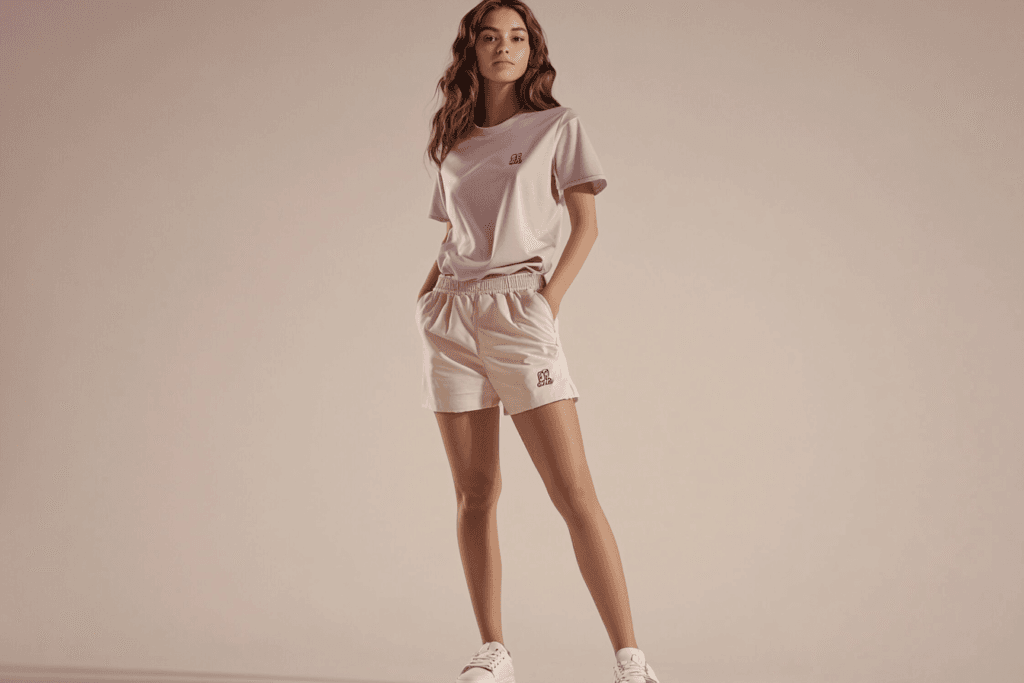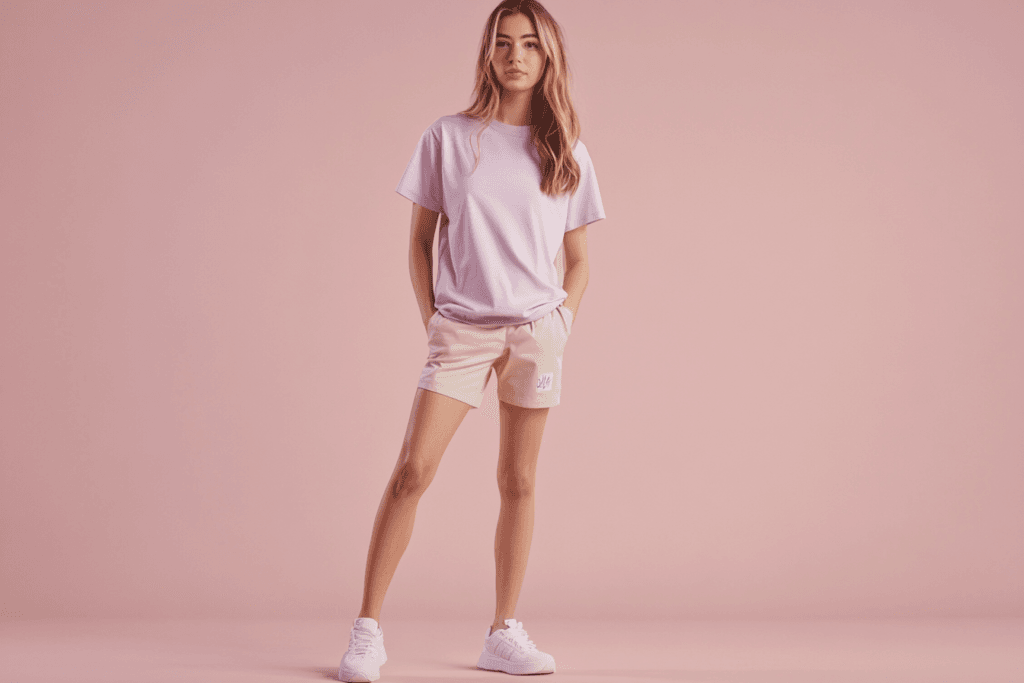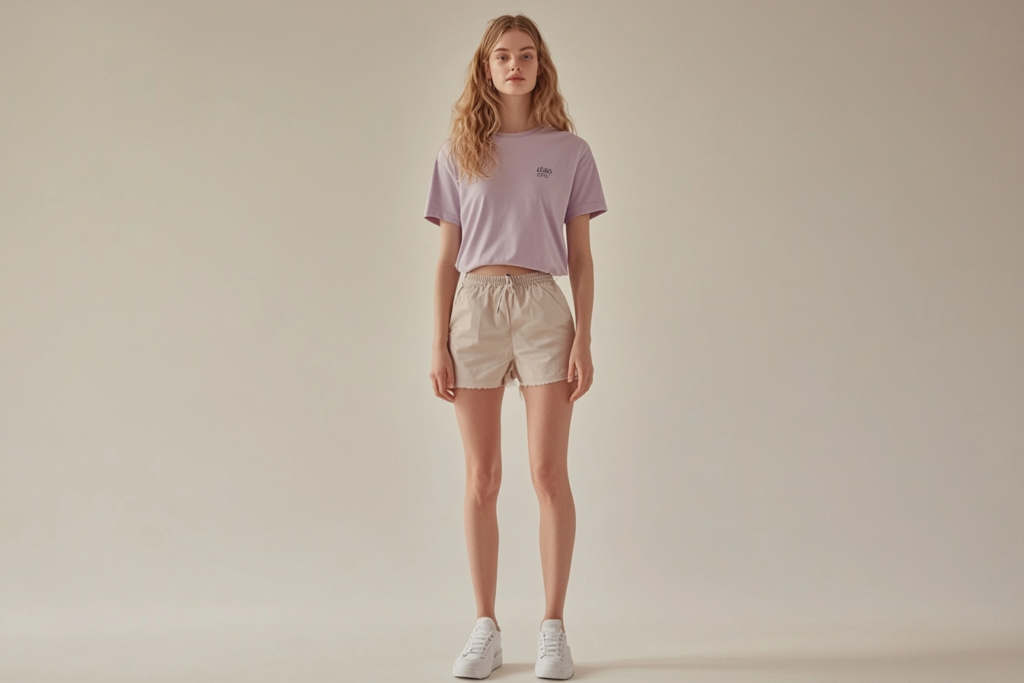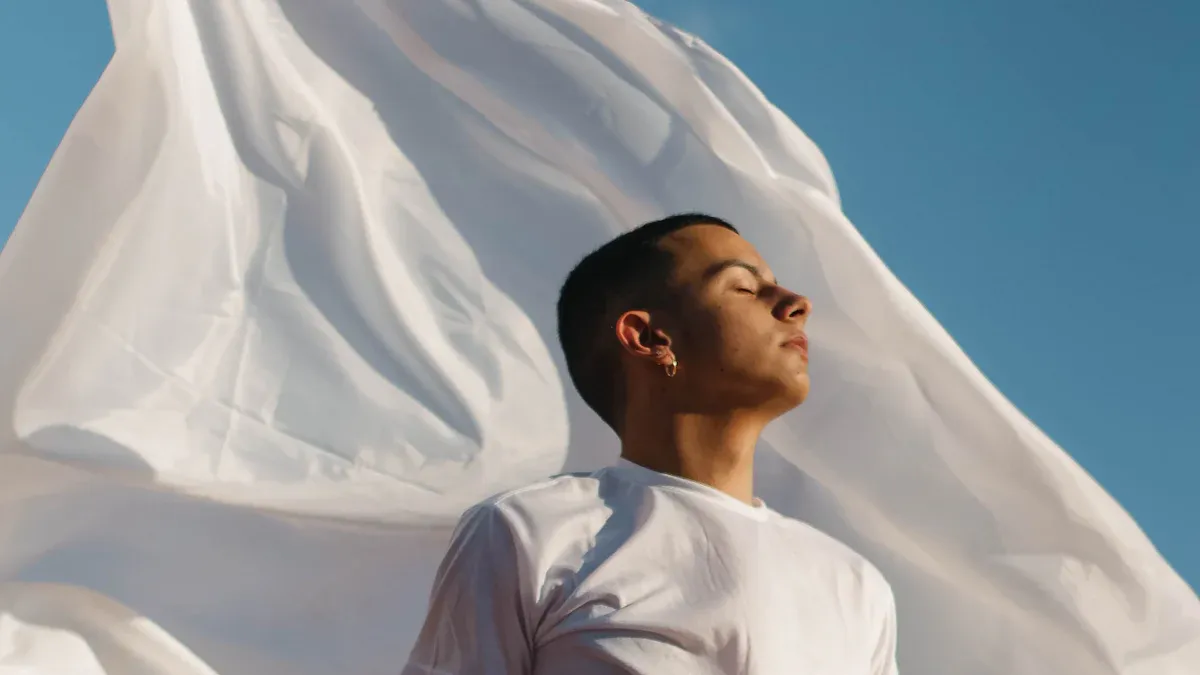
When we consider what makes clothing truly special, comfort always emerges as the decisive factor. Breathable fabrics serve as the invisible hero behind this comfort – they regulate body temperature, wick away moisture, and transform garments into second-skin experiences. This technological advantage creates the “perfect fit” feeling that keeps customers loyal to brands that master breathability.
The performance difference is measurable: Take Brand A’s leggings with 38.5 CFM (cubic feet per minute) airflow versus Brand B’s 21.6 CFM in laboratory tests. This 78% breathability advantage directly translates to how fresh and dry athletes feel post-workout – often the deciding factor in repeat purchases and positive reviews.
Yet in today’s apparel market, comfort alone no longer suffices. Modern consumers demand performancewear that delivers a trifecta: technical superiority (like weather resistance), sustainability credentials, and aesthetic appeal. Brands leveraging advanced breathable fabrics are uniquely positioned to meet these expectations, creating products that resonate with values-driven shoppers while solving genuine physiological needs.
Key Takeaways
- Breathable fabrics help you stay cool and dry by letting air pass and pulling sweat away from your skin.
- Using these materials makes clothes more comfy, keeping customers happy and loyal.
- Fabrics like Merino wool and Tencel are great because they breathe well and keep moisture away.
- Eco-friendly fabrics like organic cotton and hemp attract people who care about the planet.
- Startups should think about costs and order sizes to match their budget.
- Testing how breathable fabrics are in labs ensures good quality for activewear.
- Working closely with suppliers can help you get better fabrics and support for your brand.
- New technology in breathable fabrics brings exciting ideas for future clothing.
Why Fabric Breathability Matters for Startups
The Science Behind Breathable Fabrics
How breathable fabrics regulate temperature and moisture
Ever wonder why some clothes feel cool on hot days? That’s because of breathable fabrics. These materials let air pass through, keeping you cool. They also move sweat away from your skin, so you stay dry. This stops you from feeling sticky or wet.
Imagine running in a thick cotton shirt versus a light, sweat-wicking one. The difference is huge! Fabrics like Tencel or Merino wool help you stay fresh, even during tough workouts.
The role of fiber structure and weave in breathability
Breathability depends on how the fabric is made. Experts study how fibers and weaving affect airflow and moisture. For example:
- Loose weaves let more air pass through, making them cooler.
- Natural fibers like cotton and linen have tiny gaps for airflow.
- Well-designed synthetic fabrics can also work really well.
Research by scientists like Havlová and Zhu shows how these factors matter. The right mix of fibers and weave can make clothes much more comfortable.
How Poor Fabric Choice Impacts Customer Retention
Common complaints from customers about non-breathable fabrics
People notice when clothes don’t breathe well—and not in a good way. Here are some things they often say:
- “I feel sweaty and gross after wearing this.”
- “The fabric sticks to me when I exercise.”
- “It smells bad after just one use.”
These problems make customers unhappy. No one likes feeling trapped in their clothes, especially in heat or during workouts.
The link between comfort and brand loyalty
Comfort is super important for keeping customers happy. If your clothes are breathable, people will notice. Over 60% of fitness fans want sweat-wicking and odor-free clothes. Big brands like Lululemon and Under Armour are popular because of this.
Startups can do the same. Using breathable fabrics helps you stand out. Happy customers will return and tell others about your brand.
Tip: Think about who will wear your clothes. Are they athletes, hikers, or everyday people? Pick fabrics that fit their needs for comfort and performance.

What Are the Top 10 Most Breathable Fabrics for Activewear?
Bamboo Charcoal Hybrid
Key Benefits (+ Lab Test Data)
Bamboo charcoal hybrid fabric is a big innovation. It mixes bamboo fibers with activated charcoal. This makes it breathable and blocks bad smells. The fabric pulls sweat away, keeping you dry and comfy.
Tests using ASTM D737-18 show great airflow in this fabric. Air moves through it much better than regular cotton. This makes it perfect for activewear. The charcoal also fights odors, which is great for sweaty activities.
Best Use Cases
This fabric works well for workout clothes. Think yoga pants, gym shirts, or hiking outfits. It’s also soft, so it’s nice for loungewear. People even use it for socks and underwear to stop bad smells.
Cost & MOQ Considerations
Bamboo charcoal hybrid fabric costs more than regular bamboo or cotton. Prices are about $8-$12 per yard, depending on the supplier. You’ll need to order 500 to 1,000 yards, so it’s best for growing startups.
Merino Wool
Key Benefits (+ Lab Test Data)
Merino wool is one of the best breathable fabrics. It’s light, soft, and adjusts to hot or cold weather. It also pulls sweat away and stops odors, making it great for active people.
ASTM D737-18 tests show Merino wool has medium airflow. Its real strength is handling sweat. It absorbs moisture and releases it slowly, keeping you dry and comfy.
Best Use Cases
Merino wool is great for outdoor gear. It’s used in base layers, socks, and light sweaters. It’s also popular in fancy athleisure wear. If your brand is eco-friendly or premium, this fabric is a smart pick.
Cost & MOQ Considerations
Merino wool is more expensive than other fabrics. It costs $15-$25 per yard, depending on quality and supplier. Most suppliers need you to order at least 300 yards. It’s pricey, but the quality is worth it.
Organic Cotton
Key Benefits (+ Lab Test Data)
Organic cotton is a timeless breathable fabric. It’s soft, strong, and lets air flow easily, making it very comfy. It’s also grown without harmful chemicals, which is great for the planet.
Tests using ASTM D737-18 confirm organic cotton has great airflow. Its loose weave and natural fibers make it super breathable.
Best Use Cases
This fabric can be used for many things. It’s great for t-shirts, dresses, and baby clothes. It’s also used in bedding and home items. If your brand cares about the environment, organic cotton is a must.
Cost & MOQ Considerations
Organic cotton is cheaper than some other breathable fabrics. Prices range from $6-$10 per yard, depending on the supplier. You usually need to order 300-500 yards, so it’s good for startups of all sizes.
Tencel (Lyocell)
Key Benefits (+ Lab Test Data)
Tencel, also called Lyocell, is a top breathable fabric. It’s made from wood pulp, often eucalyptus, and feels silky smooth. Why is it special? It’s super soft, light, and great at pulling sweat away. This keeps you dry and comfy, even on hot days.
Tencel’s breathability comes from its special fiber design. The fibers soak up moisture and dry fast. This helps control body heat and stops sticky, sweaty feelings. Tests like ASTM E96 show Tencel beats many synthetic fabrics in breathability.
Best Use Cases
Tencel is great for many types of clothes. It’s used in casual t-shirts, fancy dresses, and even activewear. It’s also perfect for sleepwear because it’s so soft. If your brand focuses on eco-friendly or premium items, Tencel is a great pick.
Cost & MOQ Considerations
Tencel costs more than cotton but less than Merino wool. Prices are around $10-$15 per yard, depending on the supplier. Most suppliers need you to order 300-500 yards, making it ideal for growing startups.
Modal
Key Benefits (+ Lab Test Data)
Modal is another breathable and comfy fabric I like. It’s made from beech tree pulp and feels soft and silky. What’s great about Modal? It pulls sweat away, stays light, and doesn’t shrink or fade easily.
Tests prove Modal’s quality:
- ISO 11092 checks how it handles water vapor and heat.
- DIN SPEC 60015 measures how it manages heat loss during activities.
- Wearers rate Modal high for comfort, sweat-wicking, and warmth.
Best Use Cases
Modal is perfect for everyday clothes like underwear, loungewear, and t-shirts. It’s also great for yoga pants and activewear because it stretches and breathes well. If your brand values comfort and durability, Modal is a smart choice.
Cost & MOQ Considerations
Modal is affordable and flexible. It costs $8-$12 per yard, and suppliers usually need orders of 300-500 yards. This makes it a good option for startups at any stage.
Linen
Key Benefits (+ Lab Test Data)
Linen is a classic breathable fabric made from flax fibers. It has a natural texture and feels cool to touch. Linen breathes well because of its loose weave and ability to absorb moisture and dry fast.
Here’s why linen is special:
- It allows lots of airflow with a score of 200-300 L/m²/s.
- It absorbs sweat with a moisture regain rate of 12%.
- It spreads heat away, making it great for summer wear.
Best Use Cases
Linen is ideal for summer clothes like shirts, dresses, and pants. It’s also used for home items like curtains and bedding. If your brand focuses on natural, breathable summer fabrics, linen is a must.
Cost & MOQ Considerations
Linen is moderately priced at $10-$15 per yard. Suppliers usually ask for orders of 300-500 yards. It’s a great pick for startups offering high-quality, breathable products.
Hemp
Key Benefits (+ Lab Test Data)
Hemp is a great breathable fabric because it’s strong, natural, and eco-friendly. It comes from the stalks of hemp plants, making it sustainable and biodegradable. Hemp lets air pass through easily, keeping you cool and comfy. It also absorbs sweat fast and dries quickly, which is perfect for hot days.
Here’s why hemp is becoming more popular:
- In 2023, hemp textiles were worth $4,347.3 million, making up 39.4% of the market.
- From 2023 to 2028, it’s expected to grow by 40.8% each year.
- The European Industrial Hemp Association shows rising demand for eco-friendly fibers like hemp.
Hemp’s ability to breathe and wick moisture makes it a top choice for brands offering sustainable, high-performance clothes.
Best Use Cases
Hemp is great for casual and outdoor outfits. It’s used in t-shirts, pants, and light jackets. It’s also perfect for summer dresses and beachwear because it feels cool and airy. If your brand focuses on being eco-friendly, hemp is a smart pick.
Tip: Blends like hemp-cotton or hemp-Tencel mix the best features of each fabric. They’re softer and more flexible while keeping hemp’s breathability and strength.
Cost & MOQ Considerations
Hemp fabric costs between $10 and $15 per yard. Suppliers usually ask for orders of 300-500 yards. While it’s not the cheapest, its eco-friendly benefits and durability make it worth the price for startups targeting conscious buyers.
Polyester Mesh
Key Benefits (+ Lab Test Data)
Polyester mesh is a man-made fabric made for breathability. It’s light, strong, and dries fast, making it great for activewear. Its tiny holes let air flow freely, keeping you cool during tough activities.
Here’s how polyester mesh performs in tests:
| Fabric Type | Weight (GSM) | Porosity (%) | Air Permeability | Dry Time (minutes) |
|---|---|---|---|---|
| AirMesh | 83 | 14 | 740 | 68.3 |
| 60 GSM Alpha Direct | 60 | 27 | 920 | 39.08 |
| 100 GSM Wicking Fabric | 100 | 10 | 500 | 52.83 |
As shown, fabrics like AirMesh and Alpha Direct allow great airflow and dry fast. This makes them ideal for high-performance clothing.
Best Use Cases
Polyester mesh is perfect for sportswear. It’s used in running shirts, gym shorts, and jerseys. It’s also great for backpacks and shoes because it’s durable and breathable. If your brand focuses on athletic or outdoor gear, polyester mesh is a must.
Cost & MOQ Considerations
Polyester mesh is affordable, costing $5 to $8 per yard. Most suppliers need a minimum order of 500 yards. Its low price makes it a good choice for startups making quality activewear on a budget.
Nylon-Spandex Blends
Key Benefits (+ Lab Test Data)
Nylon-spandex blends are amazing for breathable fabrics. They mix nylon’s strength with spandex’s stretch and comfort. These blends are light, wick sweat, and dry fast, making them perfect for activewear and stylish athleisure.
What makes nylon-spandex special is how it moves with your body. Whether you’re doing yoga or running, this fabric keeps you comfy and supported. It also resists pilling and fading, so your clothes stay nice after many washes.
Best Use Cases
Nylon-spandex blends are great for leggings, sports bras, and compression wear. They’re also perfect for swimsuits and dancewear because they stretch without losing shape. If your brand focuses on performance and style, this fabric is a great choice.
Note: Choose blends with 15-20% spandex for the best stretch and comfort.
Cost & MOQ Considerations
Nylon-spandex blends are budget-friendly, costing $7 to $12 per yard. Suppliers usually need orders of 300-500 yards. This makes them a flexible and affordable option for startups at any stage.
Silk
Key Benefits (+ Lab Test Data)
Silk is one of those fabrics that feels like pure luxury. It’s soft, smooth, and lightweight, making it a favorite for breathable fabrics. What makes silk special is its natural protein fibers. These fibers allow air to flow through while also wicking away moisture. This means silk keeps you cool in the summer and warm in the winter.
Lab tests back this up. For example, silk scores high in moisture management tests like ASTM E96. It absorbs up to 30% of its weight in moisture without feeling damp. Plus, it has a natural sheen that makes it look elegant. If you’re aiming for a premium feel in your clothing line, silk is a no-brainer.
Fun Fact: Silk is one of the strongest natural fibers. A single silk thread is stronger than a steel thread of the same diameter!
Best Use Cases
Silk works best for clothing that’s meant to feel luxurious and lightweight. I’ve seen it used in everything from evening gowns to pajamas. It’s also a popular choice for scarves, blouses, and lingerie. Because it’s so breathable and soft, it’s perfect for summer wear or layering in cooler months.
If your brand focuses on high-end or eco-friendly fashion, silk can elevate your products. It’s also a great option for accessories like ties and pocket squares. Customers love the way silk feels against their skin, so it’s a great way to add a touch of elegance to your collection.
Cost & MOQ Considerations
Silk isn’t cheap, but it’s worth the investment if you’re targeting a premium market. Prices range from $20 to $50 per yard, depending on the type and quality. Mulberry silk, for example, is on the higher end because it’s the finest and most consistent.
Minimum order quantities (MOQs) vary by supplier. Most require at least 100-300 yards, which is manageable for startups aiming for a luxury niche. If you’re just starting out, consider using silk blends to reduce costs while still offering that silky feel.
Tip: Always ask suppliers about the origin of their silk. Mulberry silk is the gold standard, but there are other types like Tussar and Eri that offer unique textures and price points.

How to Choose Breathable Fabrics? The Ultimate Checklist
Picking the right fabric is super important for your startup. It’s not just about how it looks. You need to check if it’s comfy, strong, and eco-friendly. Here’s how to make better choices.
5 Key Questions to Ask Suppliers
Asking good questions can help avoid problems later. Here are five must-ask questions:
- Is the fabric sustainably sourced?
People love eco-friendly items. Ask if the fabric is organic, recycled, or certified by groups like GOTS (Global Organic Textile Standard). This shows you care about the planet. - How durable is the fabric?
No one likes clothes that rip or shrink fast. Ask for details on strength, pilling, and shrinkage. Strong fabrics mean happy customers and fewer returns. - What’s the breathability rating?
Breathable fabrics are more comfortable. Request lab results like ASTM D737-18 or ISO 11092. These tests show how well the fabric handles air and sweat. - What’s the minimum order quantity (MOQ)?
Startups often have small budgets. Check if the supplier’s MOQ fits your needs. Some suppliers allow smaller orders, which is helpful when starting out. - Can you provide samples and testing reports?
Always test before buying. Ask for fabric samples and lab reports to confirm claims about quality and performance.
Tip: Build a good relationship with your supplier. Choose one who communicates well and is open to working with you.
Here’s a quick table to guide your supplier selection:
| Criteria | What to Check |
|---|---|
| Market Research | Find suppliers through research, events, or referrals. |
| Request for Information (RFI) | Ask shortlisted suppliers for details about their services and prices. |
| Supplier Audits | Visit their facilities to check quality and processes. |
| Performance Metrics | Set goals for suppliers and track their performance. |
| Negotiation and Contracts | Agree on clear terms, prices, and expectations. |
| Risk Assessment | Check for risks linked to each supplier. |
| Financial Stability | Review their finances to ensure they’re reliable. |
| Supplier Capabilities | Make sure they can meet your production and tech needs. |
| Ethical and Sustainability | Check if they follow ethical and eco-friendly practices. |
| Relationship Building | Look for suppliers who are responsive and easy to work with. |
Warning Signs in Fabric Testing Reports
Testing reports can tell you a lot about fabric quality. But some reports may hide problems. Watch for these warning signs:
Common problems in lab results
- Fabric damage
If the report mentions fraying, cracking, or tearing, the fabric might not last long. This could lead to unhappy buyers and returns. - Fading colors
If the fabric’s color changes during testing, it may fade after washing. This shows poor dye quality. - Missing compatibility info
Reports should explain how the fabric works with other materials. Missing info can cause issues with safety and labeling.
Here’s a table of these warning signs:
| Warning Sign | What It Means |
|---|---|
| Fabric Damage | Issues like fraying or cracking show weak fabric. |
| Fading Colors | Poor dye quality can lead to fading or discoloration. |
| Missing Compatibility Info | Lack of details on material interaction can cause safety or labeling problems. |
Note: Always check testing reports carefully. If something seems wrong, ask the supplier for more details or extra tests.
By asking smart questions and reviewing reports closely, you can avoid mistakes. This ensures your fabrics meet your brand’s standards. A little effort now can save big problems later.

Conclusion
Picking breathable fabrics isn’t just about comfort—it builds trust. When clothes keep people cool and dry, they feel great. Happy customers return and recommend your brand to others.
Key Takeaways
Here’s why breathable fabrics are important:
- They make clothes comfy by reducing sweat and cooling the body.
- Fast sweat drying helps people perform better in sports.
- Fabrics like cotton are soft and gentle for sensitive skin.
3 Emerging Breathable Technologies to Watch (2025-2026 Forecast)
The future of breathable fabrics is exciting! Look at these trends:
| Evidence Type | Description |
|---|---|
| Market Value Data | Breathable fabric market will grow a lot in value. |
| Growth Forecast | Asia-Pacific will lead in growth and new ideas. |
| Competitive Analysis | Big brands are making new products to stay ahead. |
FAQ
What makes a fabric breathable?
Breathable fabrics let air move through and pull sweat away. This keeps you cool and dry. Fabrics like cotton, linen, and Tencel are great examples. They handle heat and moisture better than non-breathable ones.
How do I test a fabric’s breathability?
Try the “blow test.” Hold the fabric near your mouth and blow. If air goes through easily, it’s breathable. For better accuracy, ask suppliers for lab tests like ASTM D737-18.
Tip: Always get fabric samples before buying large amounts.
Are natural fabrics better than synthetic ones?
Not always! Cotton and linen breathe well, but synthetics like polyester mesh work for performance. It depends on your product’s use. Activewear often uses synthetic blends for better sweat-wicking.
Can breathable fabrics be eco-friendly?
Yes! Organic cotton, hemp, and Tencel are breathable and sustainable. They use fewer chemicals and less water. These are great choices for eco-friendly brands.
What’s the best breathable fabric for activewear?
Polyester mesh and nylon-spandex blends are great for activewear. They’re light, wick sweat, and dry fast. Bamboo charcoal hybrid is also good for controlling odors.
Note: Pick fabrics with sweat-wicking features for top performance.
Do breathable fabrics cost more?
It depends. Organic cotton is affordable, but silk and Merino wool cost more. Startups can save by choosing blends or ordering smaller amounts.
How do I care for breathable fabrics?
Most breathable fabrics need gentle washing. Use cold water and mild detergents. Hand wash delicate fabrics like silk. Always check the care label for instructions.
Can breathable fabrics work in winter clothing?
Yes! Merino wool and silk keep you warm in winter and cool in summer. Layering breathable fabrics traps heat without feeling stuffy.
Fun Fact: Merino wool absorbs sweat but stays dry, making it great for cold weather.
